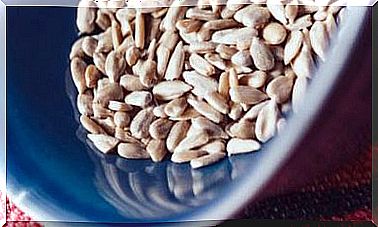Change Your Lasagna: 3 Tips To Innovate
Do you love classic vegetable lasagna but would like to vary? With these tricks, your lasagna will seem different.

The lasagnas are preparing the most appetizing than rife much if we make a good deal. They are always in the mood and are easy to store and carry. The typical vegetable lasagna made with pasta, textured soy, tomato sauce and vegetable béchamel is always a success, but if we want to vary without neglecting that exquisite structure of creamy layers, we can do so by changing some (or all) ingredients.
I give you some very simple ideas to vary your lasagna and that they are always fantastic with vegetable ingredients:
Instead of lasagna pasta …
1. Zucchini
Thinly slice the zucchini lengthwise with a vegetable peeler or mandolin and use in place of pasta plates. The zucchini takes a little while to make, so there will be no problem with textures or flavors. Of course, do not go thick.
For an extra flavor, before adding the slices, brown them on the grill or in the pan with a pinch of salt.
2. Eggplant
Like zucchini, it is sliced and used as “pasta.” If you are using large black or striped aubergines, let the slices rest in a bowl, sprinkled with salt, for at least half an hour. Then wash them to remove much of the bitter compounds from the eggplant.
With Chinese and Japanese long aubergines it is not necessary, they do not usually have that bitterness.
If you want the layers of eggplant to be extra tender and silky, you can brown them in the pan or grill for a few minutes and make sure that the filling is creamier than dry. This will absorb some of the liquid and make them softer still.
3. Sweet potato
Sweet potatoes also serve as a lasagna plate . Cut into large, thin slices with a mandolin and grill or lightly brown them before adding to the lasagna. The sweet potato takes longer to cook than the zucchini or the eggplant (it takes more or less like the potato), so it is better that we put it half-done (or completely done) and thus
avoid hard parts or raw sweet potato slices.
Instead of bechamel …
1. Cashew cream
Use preferably raw cashews. Let them soak in plenty of water for a few hours (or overnight), drain them and beat them with the mixer, adding water or vegetable drink (whatever you want but without sugar and without flavors) until a thin and thick cream is formed. Add salt and a pinch of nutmeg, ground pepper, etc.
This cream works the same as béchamel, as a sauce for our lasagna, and we can make it more or less thick by adding water or a vegetable drink. If you also use soy drink, it will brown much better when gratinated due to the protein content of the sauce.
2. Coconut cream
If you like exotic flavors, try swapping the béchamel for coconut cream. Use store- bought coconut cream or refrigerated cans of coconut milk. If you use cans, open them and scoop up only the solids with a spoon. Add salt and the spices you want and use it as a cream instead of the béchamel.
For more coconut flavor add a little of the coconut water from the can and mix well.
The coconut cream tends to get more heat, so if you want to stay strong after baked, add a few tablespoons of wheat flour and a pinch of water before pouring it on the lasagna.
3. Avocado cream
It is enough to pass the meat of a large avocado through the blender along with a vegetable drink (that is unsweetened and without flavors), salt, nutmeg and ground black pepper. The avocado cream is green, not white, but the lasagna is great.
Gratin very well and has a very pleasant texture, as well as a mild flavor. Of course, it is quite full (like the cashew nuts more or less). If you prefer, you can make a “mixed” cream of avocado and béchamel or avocado and coconut cream.
For the filling
1. Lentil Bolognese
A delicious bolognese can be made using cooked and drained lentils instead of textured soybeans or similar. Of course they serve the pot lentils, which come ready-made. One of the advantages of making a lasagna with this filling is that you are putting legumes where you probably did not think they could fit.
Follow this same example with other meals and you will see how easy it is to incorporate legumes into any dish.
2. Cauliflower Bolognese
Grate cauliflower with a large hole grater and bolognese just like you would hydrated fine textured soybeans. Cauliflower made this way, grated and pan-browned, is great for lasagna and any pasta dish, as it does not resemble cooked or boiled cauliflower but does resemble fine textured soybeans.
3. Vegetables Bolognese
Exactly the same as in the previous cases, but using finely chopped vegetables. Use carrots, beets, parsnips, peppers, onion, zucchini, aubergine, celeriac, cabbage, green beans, chard, fresh spinach … Make sure there are not too large pieces and preferably start with a sauce so that it adds more flavor.
You can also add frozen peas, broad beans, mushrooms, mushrooms or the remains of other dishes that you have in the fridge (a cup of rice cooked with vegetables, quinoa or other cereals or legumes).
4. Spinach with tofu
Instead of the typical tomato-based filling like bolognese, cut hard tofu into small cubes (or crumble it with your hands) and fry it with a good amount of spinach (frozen will also work, of course) with a pinch of salt , pepper, nutmeg and other spices that you like. Add a handful of pine nuts if you have it and let it brown all together.
5. Scrambled eggs with mushrooms with tofu
Similar to spinach filling but using mushrooms and mushrooms and more tofu. For this version, it is more advisable to crumble the tofu and add it with the mushrooms cut into medium or small pieces so that everything is browned together.
You can use mixtures of mushrooms or those that they have in the greengrocer. Remember that they reduce a lot, so you will have to put a good amount if you are going to make a large lasagna.









